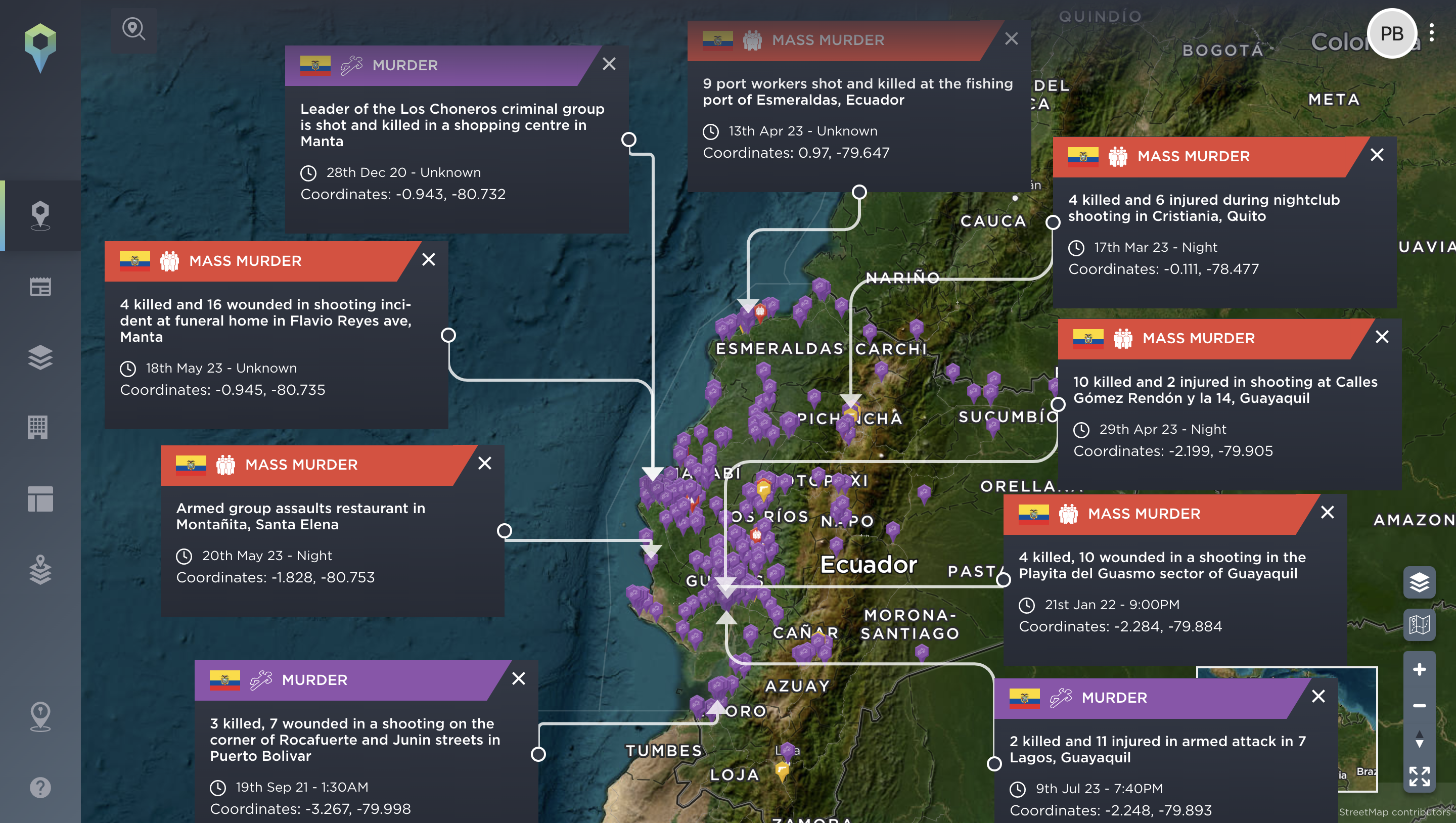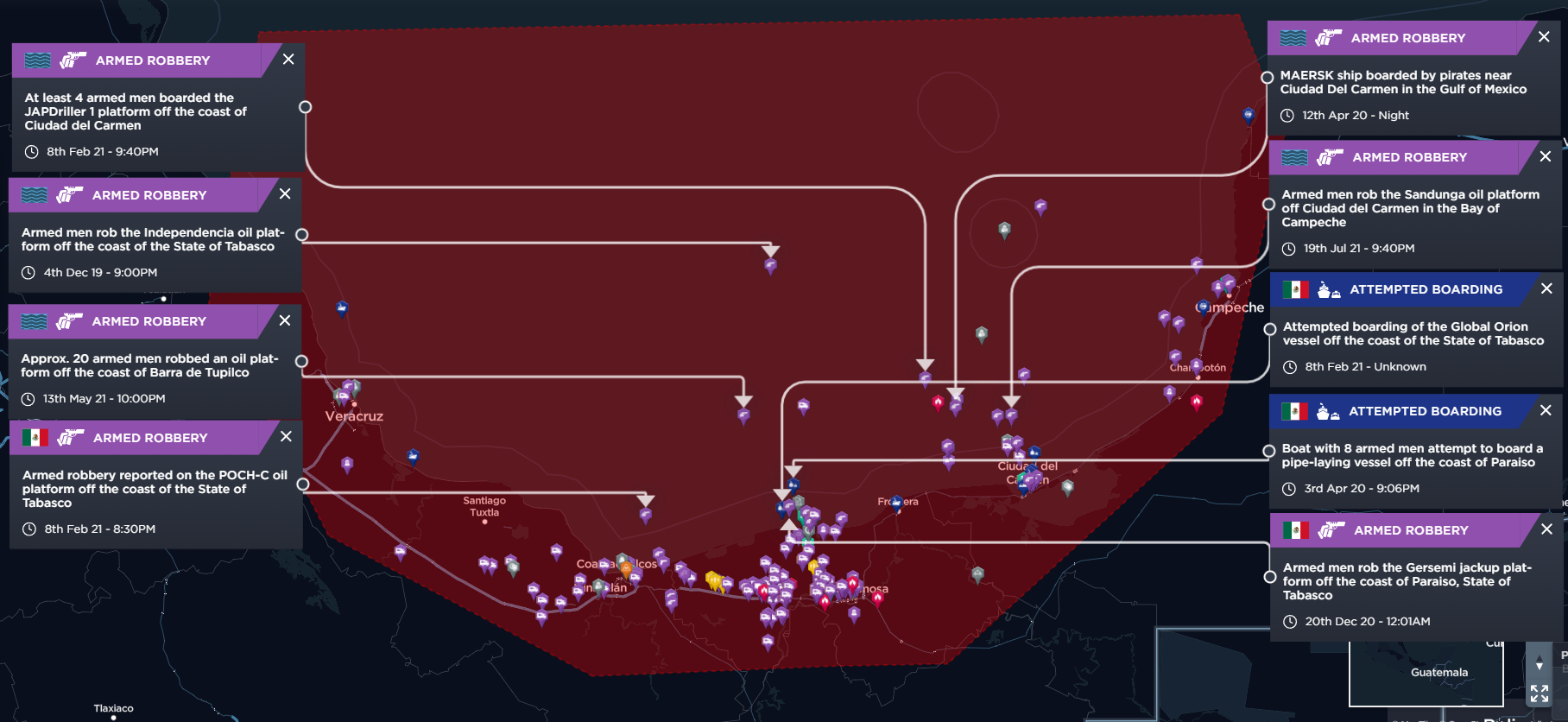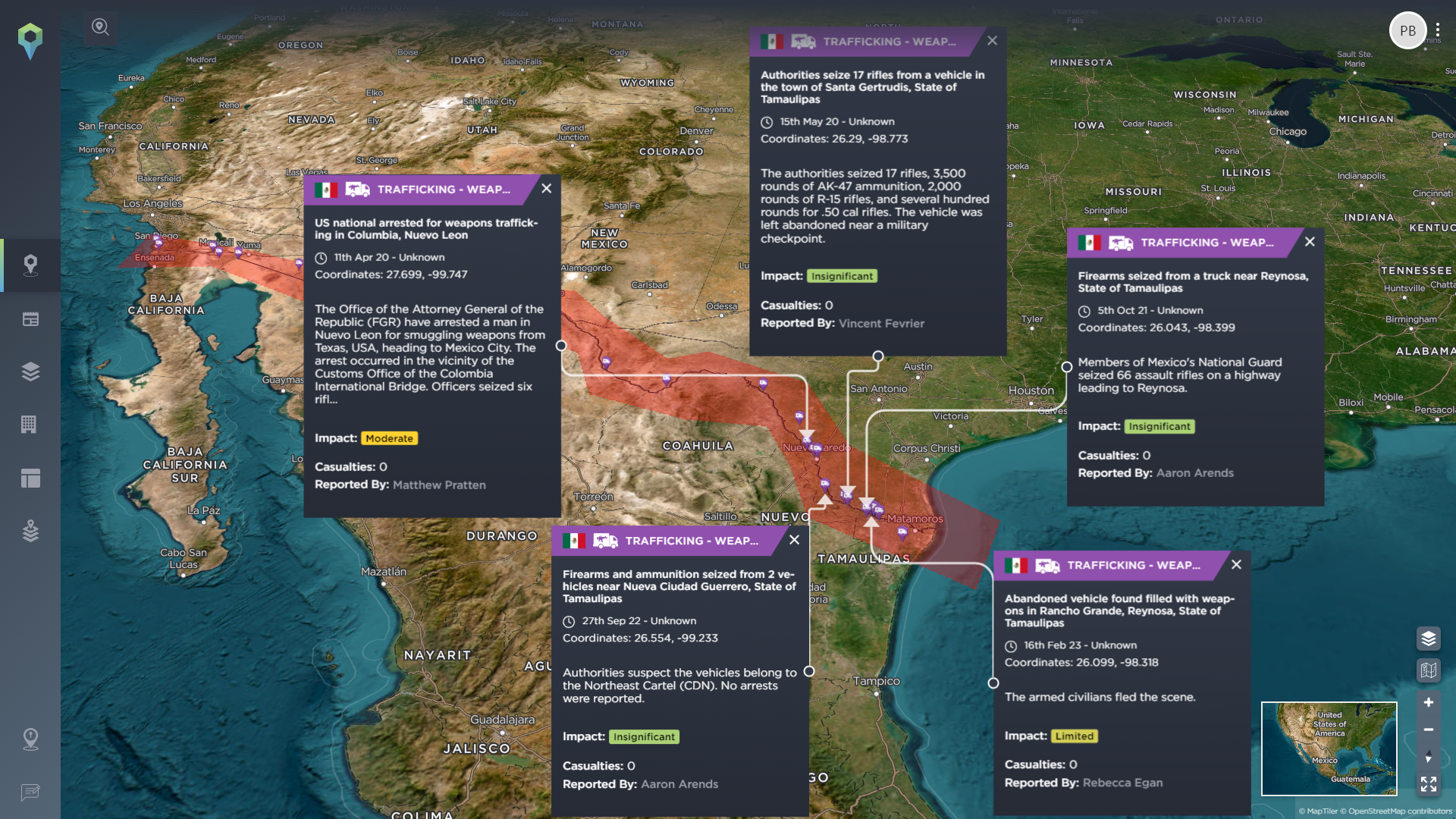Exploring Port Security Threats in South and Latin America
What are the growing port security threats in South and Latin America? With armed robbery, piracy and hijacking now rivalling drug trafficking for the biggest threats facing maritime companies operating in South and Latin American ports, we take a look at an increasingly threatened region for port security.
- Chile and Peru recorded the most hijacking incidents.
- Brazil, Colombia, Peru, Haiti and Ecuador are experiencing an increase in armed robberies and incidents targeting crews whilst ships are docked at ports.
- Gang activity in ports is evolving and is likely increasing the threat level for port crime.
South and Latin America is currently experiencing the highest increase of maritime crime of any region in the world.
Maritime crime in South and Latin America differs per country, with ports being a notorious hotspot from criminal activity. Drug trafficking, armed robberies, money laundering and contraband smuggling are amongst the most active threats, occurring almost daily in each country across the region.
The rising risk of ports being a target for illicit activities and organised crime is combining both new and existing security threats towards maritime traffic in the region, having major effects on safety, supply chain and operations.
Corruption and lack of effective law enforcement is a likely contributor to the rise in criminal activity at ports, combined with the region’s complex geography and vast coastline making it challenging to monitor and control port activities.
Efforts to combat port crime, including increased security measures, improved border control and international cooperation are proving to be only somewhat effective.
As of June 2023, incidents reported at ports across South and Central America equate to 14% of maritime incidents globally. Ports in Peru (Callao), Brazil (Macapa), Colombia, Haiti and Ecuador have become hotspots for maritime crime, with a notable increase of violence against ships and crew.
This blog aims to offer a brief overview of crime at ports, combined with likely consequences for maritime operators in South and Latin America.
Armed robbery and piracy
Armed robberies remain the most frequent threat to maritime security, particularly in the Caribbean, potentially outweighing other criminal activities such as drug trafficking.
Maritime threats facing Latin American countries:
- Argentina: Piracy, armed robbery and smuggling
- Brazil: Piracy, armed robbery, smuggling and drug trafficking
- Chile: Piracy and armed robbery
- Colombia: Piracy, armed robbery, drug trafficking and illegal fishing
- Ecuador: Piracy, armed robbery and drug trafficking
- Guyana: Piracy and armed robbery
- Panama: Armed robbery and drug trafficking
- Peru: Piracy, armed robbery and drug trafficking
- Suriname: Piracy and armed robbery
- No reported maritime crimes in Paraguay and Uruguay.
Although seemingly underreported, in 2021, 45% of maritime crime occurred at ports and included theft of or from vessels, with most occurring at ports within the Pacific Ocean, followed by the Caribbean Ocean and the Atlantic Ocean.
In 2022, 24 piracy and armed robbery incidents were reported in South and Central America, with a high percentage in and around the ports of the Gulf of Mexico and the Caribbean Ocean.
Commercial ships appear to be the primary target for port crime, with a trend of attacks occurring at night whilst the vessel is anchored. In most cases, large amounts of cargo are stolen with limited casualties. The timing of the robberies suggests the attacks may not be violently motivated, by acting with an element of secrecy opposed to seeking armed confrontations, however, the risk of onboard confrontations and the threat of hostage taking remains high.
There are no available reports in 2023 of incidents including recreational ships, however, the threat still remains.
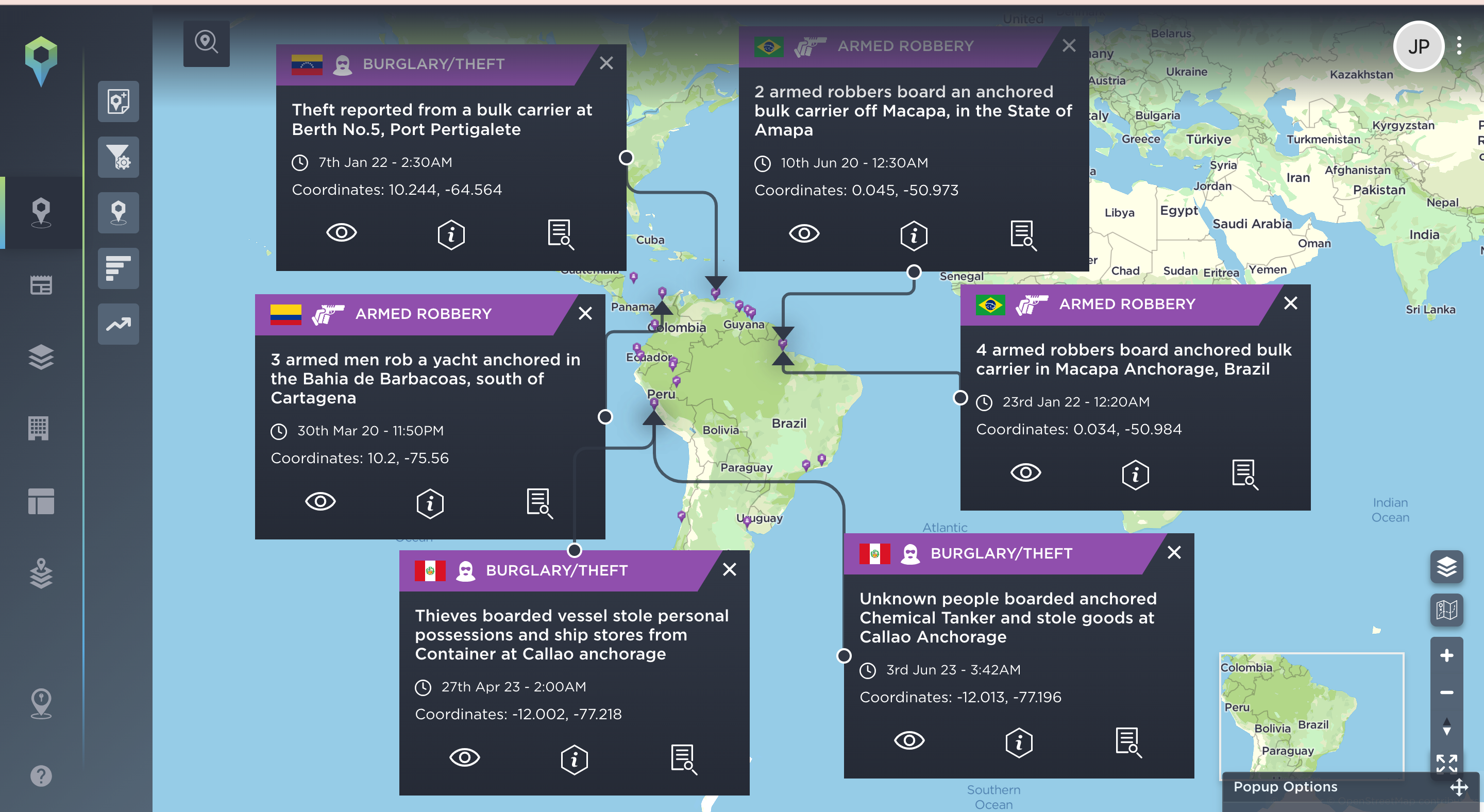
Examples of past reported incidents of armed robberies on anchored ships from 2020 to present day (2023) [image source: Intelligence Fusion]
Hijacking
Boat hijacking is an increasing concern within South and Latin America, with hotspots off the coasts of Brazil, Chile, Colombia, Peru, and Venezuela.
2022 research uncovered that Peru and Chile recorded the most hijacking incidents across the region, with 57% of maritime incidents in Chile being hijackings, predominantly targeting cargo ships. Contrastingly, in 2022, despite a high number of recorded incidents, there was a 33% decrease of crime in Peruvian ports.
Most of the incidents pertaining to hijacking target smaller vessels, but cruise and tour operators are advised to take precautions. Another notable trend is that a high percentage of hijackings within South and Latin America occurs on rivers. Whilst rivers are sprawling with organised criminal activity, motivations of river hijackings are often carried out in protest or to make a statement.
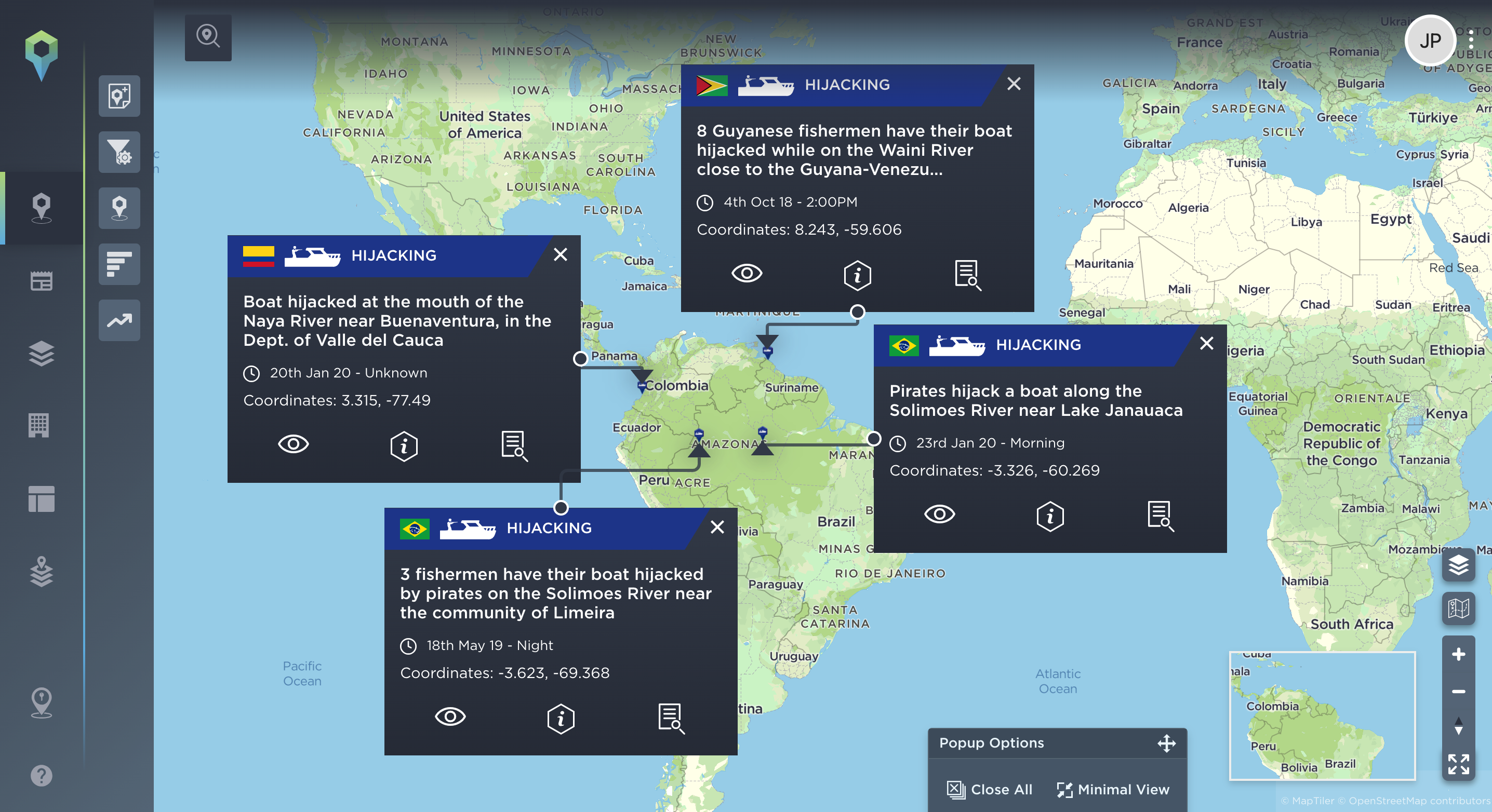
Examples of past hijacking incidents on rivers within South and Latin America [image source: Intelligence Fusion]
It is worth noting a potential discrepancy in hijacking numbers, as they may be misclassified; such as being regarded as an armed robbery or attempted boarding.
With the increase of crew targeted incidents, it is likely that security enhancements will be implemented, such as restrictive access and/or heightened law enforcement operations in port areas. With anchored boats at ports becoming a harder target, it is likely that hijackings on rivers will increase. Conversely, heightened security could also potentially lead to incidents, such as armed robberies, becoming more violent in ports as criminals arm themselves to counter increased security.
Why is port crime increasing?
The notable rise in port crime is likely related to the increase of shipments as well as factors such as the dampened economy, social inequality, foreseen opportunity, and the prominence of valuable items, legal and contraband, that passes through South and Latin America ports.
An estimated 90% of cocaine is produced in the Andean region, notably Colombia, Peru and Bolivia, most of which enters into ports. Wildlife, agriculture, fuel, and food smuggling is also on the rise across South and Latin America ports, with a notable increase of soybean and wood seizures, particularly in the border areas of Argentina and Brazil. The rising prevalence of contraband in ports is expected to heighten the potential for maritime criminal activities, consequently leading to a greater number of targeted incidents at ports.
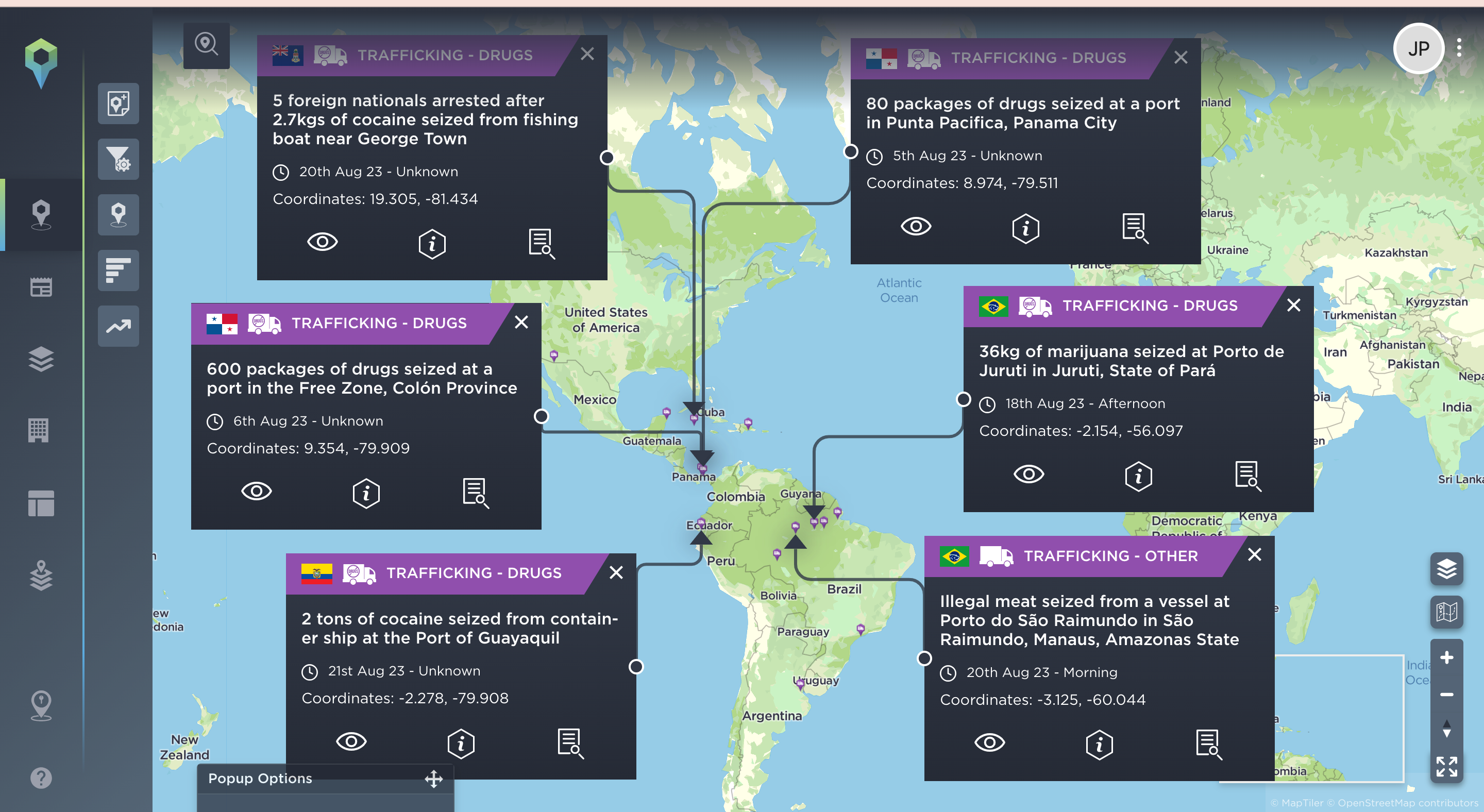
Examples of recent drug and contraband seizures at ports in South and Latin America [image source: Intelligence Fusion]
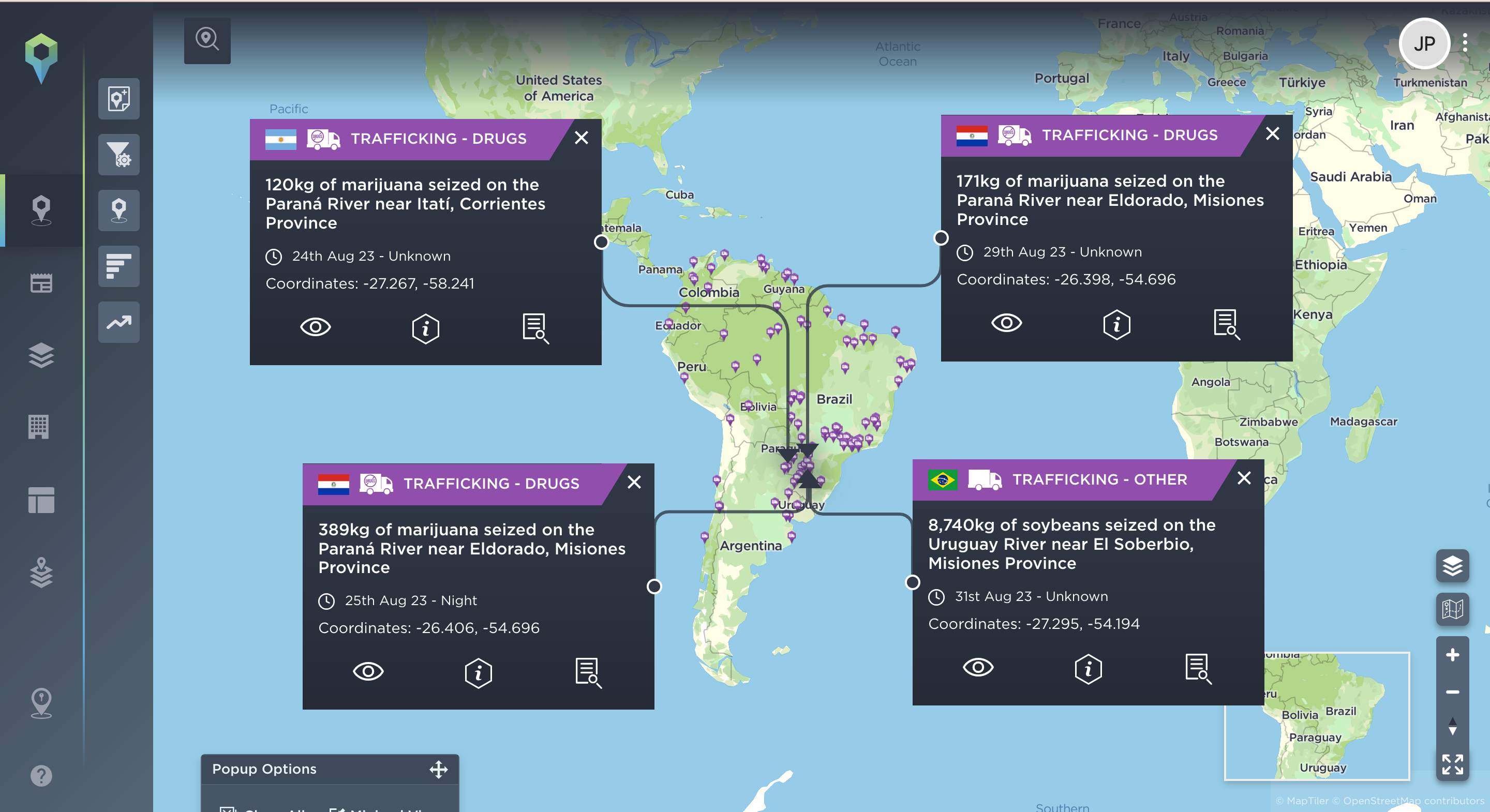
Examples of recent drug and contraband seizures on rivers in South and Latin America [image source: Intelligence Fusion]
Gang activity
Under direction of criminal factions, the increase of illegal shipments is coinciding with a reported rise of homicides, seizures and armed confrontations across the region.
The lack of information about cartel and gang activities in certain areas fuels speculation, which is connected to the rise in police and military presence along rivers and ports in areas suspected of gang involvement.
Whilst rivers such as the Paraná, Uruguay and Amazon are commonly used to transport illicit goods throughout South and Latin America before reaching the designated port, ports are used to store, transport and deliver contraband.
Shipments then leave ports, primarily by three main routes; the Pacific route, the Caribbean route, and the Atlantic route, destined for Europe, North America and other parts of the world.
During the journey it is common for shipments to be transferred over multiple vessels, including commercial boats, likely increasing the opportunity for criminal activity such as hijackings and piracy.
In light of the three main routes becoming hotspots for crime and heightened security operations, cartels and criminal factions are finding new ways to smuggle illegal cargo, more so through the use of concealing contraband on larger vessels whilst at ports, as opposed to using smaller fishing boats. This change is likely to allow for more cargo to be shipped at one time, hinder capture, and hinder surveillance operations. It is also worth noting that this change could be to deter piracy attempts as smaller vessels are more commonly targeted.
An increase of cartel and gang motivated crime is likely to decrease safety in the port areas, and could lead to violent confrontations, notably drug-related feuds. The threat of bribery and extortion towards port security and law enforcement is also increased, along with creating new opportunities for cartel operations, in turn, exacerbating port crime across South and Latin America.
Potential impact
With South and Latin America trade being crucial to supply chains, and the Caribbean being favourable to cruise tourism, maritime crime remains a prominent and constant threat.
An escalation in criminal activity could lead to docking at ports becoming unfavourable due to the risk of armed robberies and hijackings, and it is likely that route paths and layovers may be reconsidered. Long stays in ports are also likely to be avoided to reduce the risk of becoming a target of organised crime.
Changes to travel will likely lead to cruise operators experiencing businesses losses. However, without greater precautions the risks of becoming targets for illegal activity and/or being caught in the crossfire of armed confrontations are increased. Measures such as curfews, and increased general security are amongst a few measures that are already being implemented to decrease the threat of criminal activity.
Commercial operators will likely need to invest in greater security measures when docking at ports, as well as reconsidering sailing routes when travelling within the region; all of which are likely to cause supply chain and financial consequences.
A rise in criminal activity is likely to promote the need for greater law enforcement operations, such as frequent spot-checks of both commercial and leisure vessels. Timely inspections and vessel interceptions are likely to cause travel disruptions, impacting on supply chain.
For the latter end of 2023, it is highly likely that further maritime crime incidents will be reported, notably armed robberies, in turn, likely increasing the threat of piracy and hijacking attempts within the region.
With the increased and unpredictable threat of violent altercations, changes to sailing routes and maritime restrictions are likely to be implemented, causing travel disruptions within the region.
It is likely that as more incidents occur, crime hotspots will develop, enabling more efficient anti-crime operations to be implemented. However, despite aggressive efforts to target maritime crime, it is likely that gang activity will adapt and evolve and remain an active security threat.
At Intelligence Fusion our global intelligence coverage is led by a 24/7 operations team, mapping security and operational risk related incidents across land, air and sea. Our granular coverage and in-depth intelligence collection is guided by client interest – as part of your onboarding you will go through an Intelligence Collection Plan (ICP) that allows us to hone in on your areas of interest and prioritise the information that you need most. If you’d like to learn more about our threat intelligence platform – home to more than 1,000,000 historic incidents, with thousands of new incidents mapped every week as they happen – reach out to a member of our team below.

